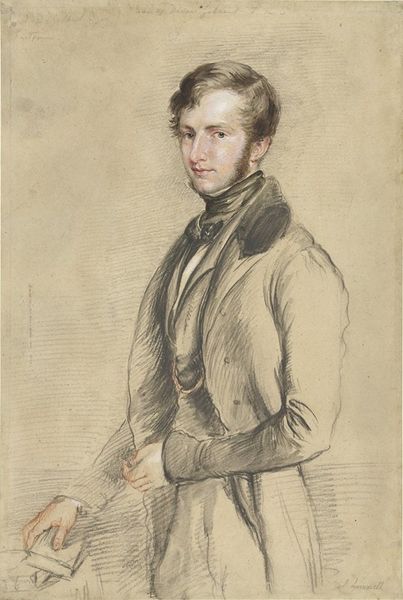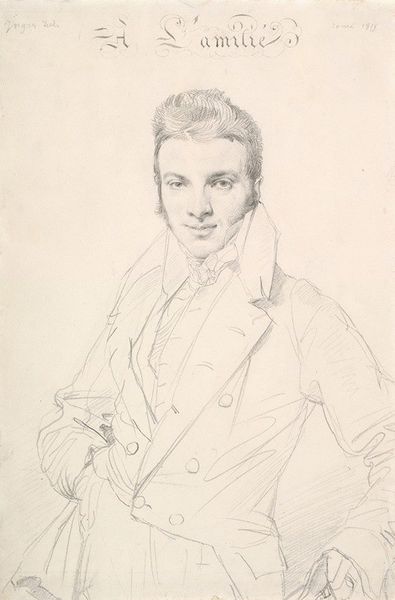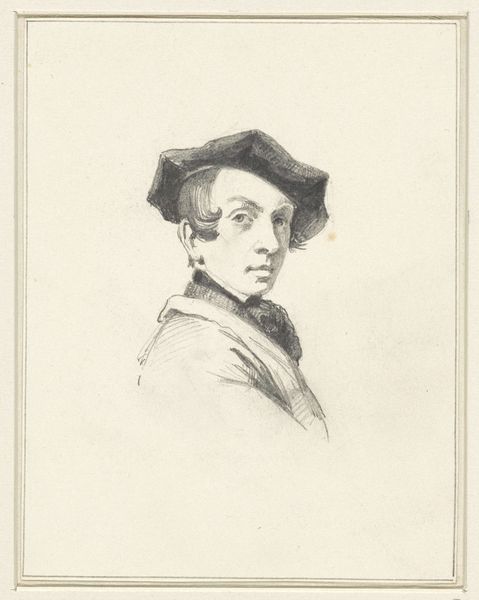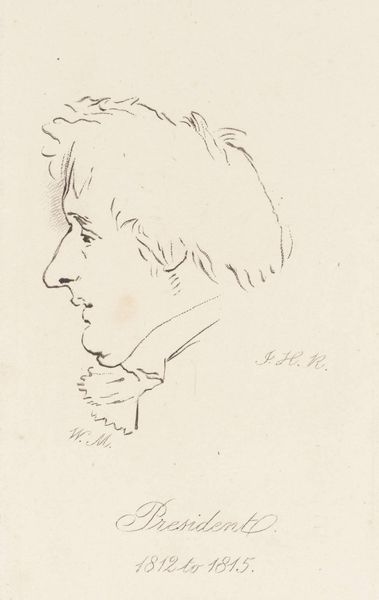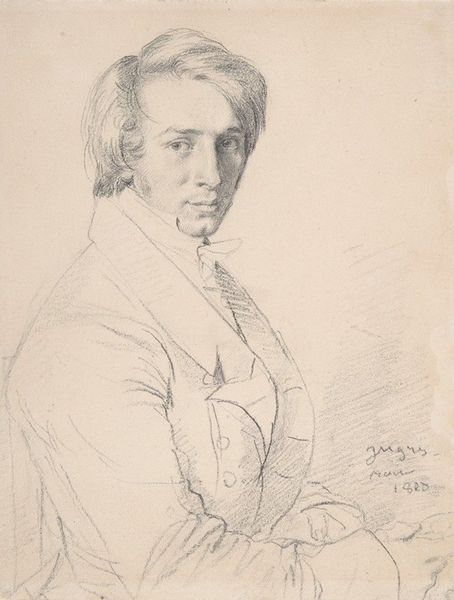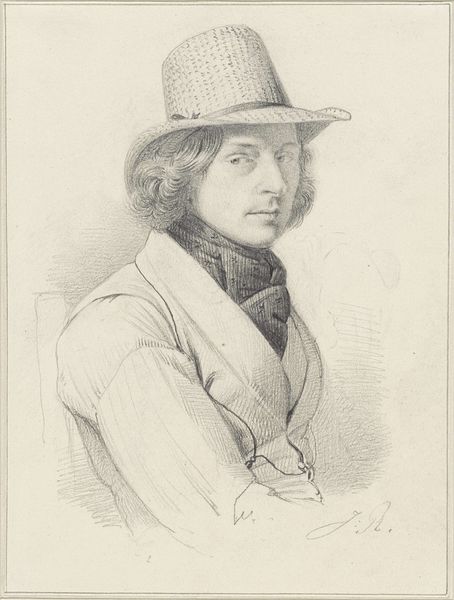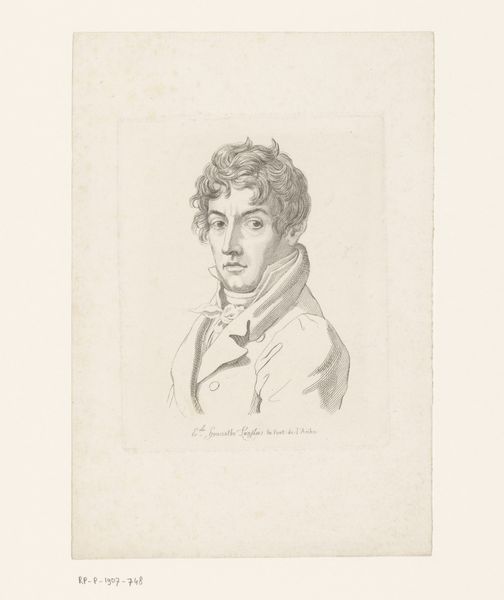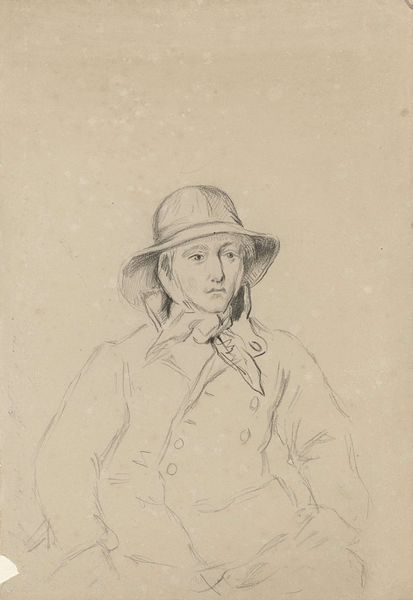
drawing, pencil
#
portrait
#
pencil drawn
#
drawing
#
neoclacissism
#
pencil drawing
#
pencil
#
portrait drawing
#
academic-art
Copyright: Public Domain: Artvee
Editor: So, this is a portrait of Lancelot-Théodore, comte Turpin de Crissé, by Jean-Auguste-Dominique Ingres, done in pencil. It has a certain restrained elegance. How do you interpret this work beyond just a likeness? Curator: For me, this drawing opens up a broader conversation about power, representation, and the male gaze in early 19th century France. Ingres's meticulous attention to detail, especially in rendering the Comte's clothing and posture, speaks to the subject's social standing and wealth. How does that impact your understanding? Editor: I see that, it does feel constructed...Almost like Ingres is carefully crafting a specific image. Do you think there is anything about masculinity that Ingres is commenting on? Curator: Absolutely! Consider the context: post-revolutionary France was still defining itself. This carefully constructed image of masculinity—restrained, elegant, intellectual—was very much a reaction to the perceived excesses and instability of the prior era. The portrait projects authority, not through overt displays of force, but through subtle markers of refinement and control. The way he holds the hat speaks volumes. Do you think it appears affected? Editor: It does come across that way. It makes me wonder how the expectations for men in positions of power impact individuals? The gaze feels a bit artificial. Curator: Exactly. Ingres captures not just a man, but an ideal. Critically examining these portraits reminds us how artistic representations play a role in shaping societal expectations, and normalizing, even glorifying, certain forms of power. Editor: This has totally reshaped my understanding of portraiture from merely capturing likenesses to participating in power structures. Thank you! Curator: And seeing these works with fresh eyes keeps their historical narrative in play. It allows the artwork to challenge the here and now.
Comments
No comments
Be the first to comment and join the conversation on the ultimate creative platform.
